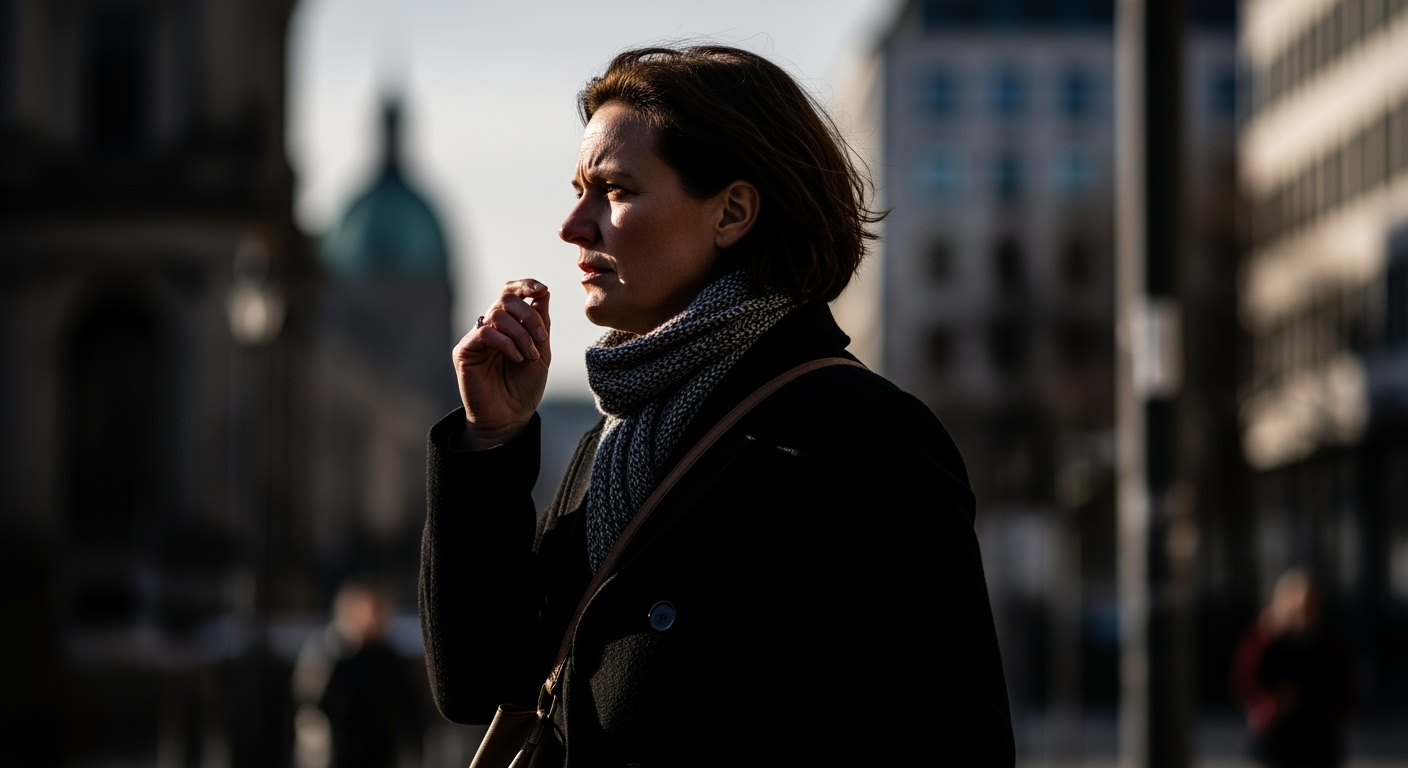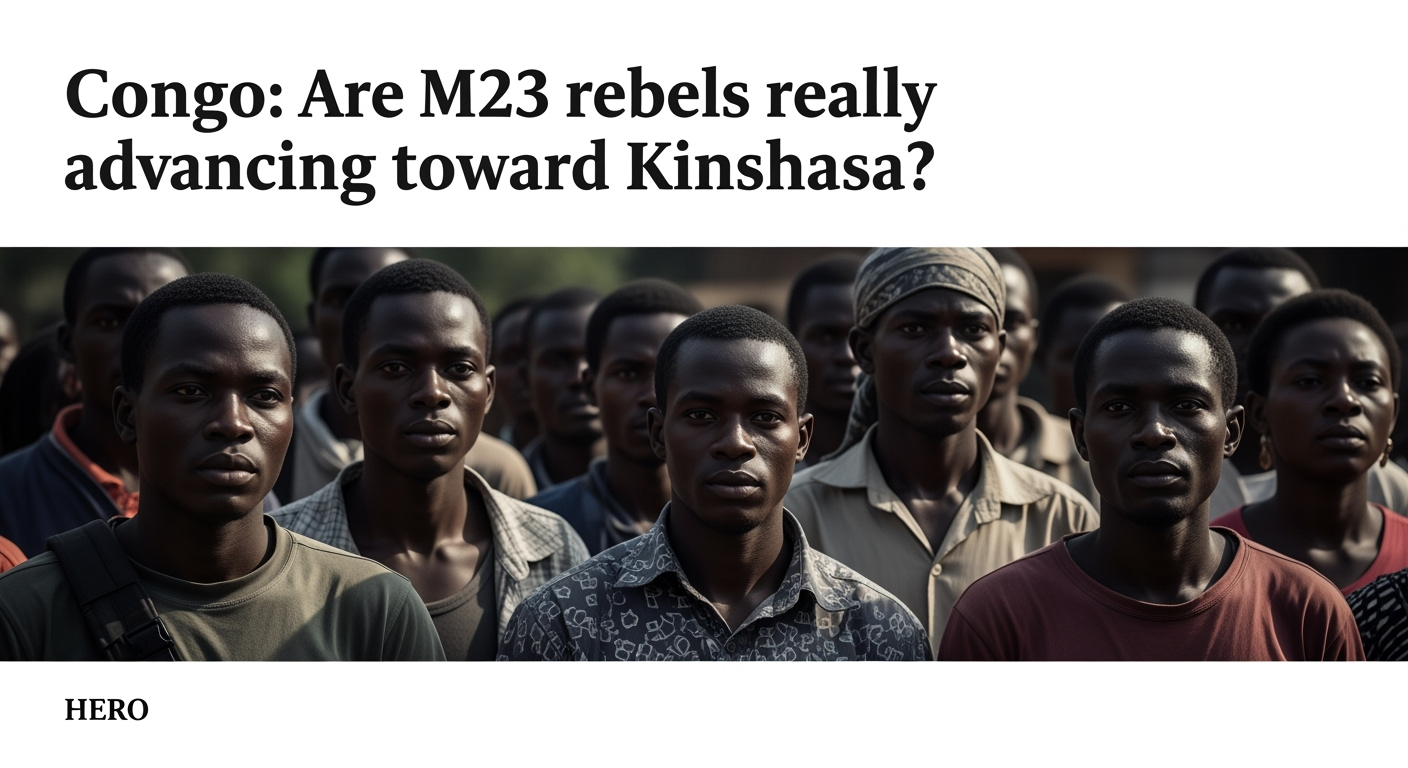Related Articles

Germany Grapples with Criminalizing Catcalling: A Debate Over Public Space and Dignity




KINSHASA, DR Congo – A recent declaration by a prominent M23 rebel leader vowing to march on Kinshasa has ignited concern, but military analysts suggest the group's current strategic focus remains firmly on consolidating its substantial gains in the mineral-rich eastern provinces of the Democratic Republic of Congo (DRC). While the rhetoric serves to exert political pressure and influence ongoing peace negotiations, the immediate military objective of the March 23 Movement (M23) appears centered on entrenching its control over North and South Kivu, areas pivotal for their economic and strategic value.
The M23, a rebel group allegedly backed by Rwanda, has experienced a significant resurgence since late 2021, marking an escalation in a conflict that has plagued eastern DRC for decades. In late 2024 and early 2025, the group mounted a series of rapid and successful offensives, capturing vast swathes of territory, most notably the provincial capitals of Goma in North Kivu and Bukavu in South Kivu. The offensive, which resumed in October 2024 after a brief pause, saw the M23 and allied forces advance with speed, cutting off key road connections and overwhelming Congolese military (FARDC) defenses.
The capture of Goma in January 2025 was a critical turning point, followed swiftly by the seizure of Bukavu in February. These advances have allowed the M23 to expand its operational footprint significantly beyond its previous rebellion in 2012-2013. Reports from the UN and other organizations indicate that by December 2022, the M23 controlled approximately three times the territory it held in March of the same year, a trend that continued into 2023 and escalated sharply in late 2024 and early 2025. This territorial expansion is not merely about land; it strategically targets areas rich in minerals such as coltan, tin, tungsten, and gold, providing the group with substantial revenue streams. For instance, the M23 seized Rubaya, a key coltan mining town, and has reportedly generated significant monthly income from taxing mineral production and trade.
M23 leader Corneille Nangaa reportedly declared an ambition to "continue the march of liberation all the way to Kinshasa". This statement, delivered amidst the group's significant territorial gains in the east, has naturally drawn attention to the distant capital. However, experts on the region view such pronouncements as largely strategic and rhetorical. Onesphore Sematumba, an analyst at the International Crisis Group, acknowledges that while overthrowing the government might be a long-term goal for the M23's alliance, the immediate threat of a direct advance on Kinshasa is not currently supported by operational realities.
Yvon Muya, a researcher at Saint Paul University, suggests that both the rebels and the Congolese government often use combative public statements to strengthen their respective positions in ongoing and prospective negotiations. Alex Vines, head of the Africa program at Chatham House, similarly downplays the seriousness of an imminent rebel march on Kinshasa. The M23's current military activities are concentrated in North and South Kivu, where they are engaged in consolidating control, establishing parallel administrative structures, and leveraging the region's mineral wealth. While the fall of Goma did trigger riots and increased political pressure on the government in Kinshasa, these were reactions to events in the east, rather than direct military threats to the capital itself.
The conflict's complexity is amplified by allegations of external support. The DRC government, the United Nations, and other international bodies have repeatedly accused Rwanda of providing military backing to the M23, including troops and sophisticated weaponry. A UN Group of Experts report, made public in July 2025, revealed that at least 6,000 Rwandan soldiers were deployed in Congolese territory to support M23 operations, with Rwanda also providing training and logistical aid. Rwanda denies direct involvement, citing security concerns related to Hutu rebel groups, particularly the Democratic Forces for the Liberation of Rwanda (FDLR), operating in eastern DRC. This mutual recrimination fuels a dangerous cycle of conflict and diplomatic tension across the Great Lakes region.
Regional efforts to mediate peace have faced significant challenges. Ceasefire agreements, such as one brokered by Angola in August 2024, have repeatedly broken down. Disagreements over preconditions for talks, particularly Kinshasa's refusal to negotiate directly with the M23 and Rwanda's insistence on such engagement, have stalled diplomatic progress. The withdrawal of some regional forces, including elements of the Southern African Development Community (SADC) mission, has further complicated the security landscape for the Congolese government, which increasingly relies on local armed groups for resistance against the M23.
The protracted conflict and the M23's renewed offensive have exacted a devastating toll on the civilian population. Millions of people have been displaced, particularly in the North and South Kivu provinces. The UN reported over 700,000 newly displaced people in early 2025 alone, adding to an already dire humanitarian situation. Displacement camps are overcrowded, and residents face a constant threat of violence, including shelling, sexual violence, and forced recruitment.
Essential services are severely disrupted, and food insecurity is widespread, affecting 23.4 million people, with over 237,000 displaced in 2025 alone. The UN peacekeeping mission, MONUSCO, has faced criticism regarding its effectiveness in protecting civilians, and its planned withdrawal, initially targeted for December 2025, has been delayed due to the escalating violence. The humanitarian response struggles to meet the immense needs, further exacerbated by the volatile security environment and the M23's alleged human rights abuses, including mass killings, rapes, and attacks on civilian infrastructure.
While the M23's rhetoric of advancing toward Kinshasa has generated headlines, the immediate and ongoing reality of the conflict is a fierce contest for control over the eastern provinces of the Democratic Republic of Congo. The rebel group's focus remains on expanding and solidifying its grip on mineral-rich territories in North and South Kivu, where it has established parallel governance structures and accrued significant resources. The conflict is primarily driven by complex historical grievances, geopolitical interests, and the lucrative control of mineral wealth, rather than an imminent military march on the distant capital.
The humanitarian crisis in the eastern DRC continues to be one of the world's most severe, with millions displaced and vulnerable. Efforts towards a lasting peace are undermined by deep-seated mistrust, continued alleged external interference, and the cyclical nature of violence that devastates civilian lives. Until diplomatic solutions address the root causes of the conflict, including the illegal exploitation of resources and accountability for alleged external support, the eastern DRC will likely remain a battleground, regardless of any declared intentions regarding Kinshasa.